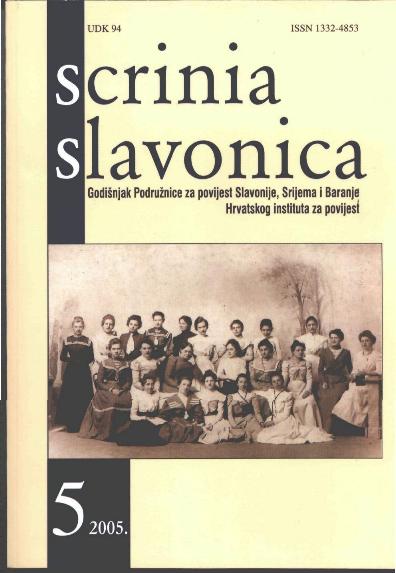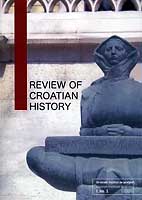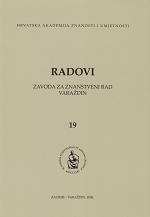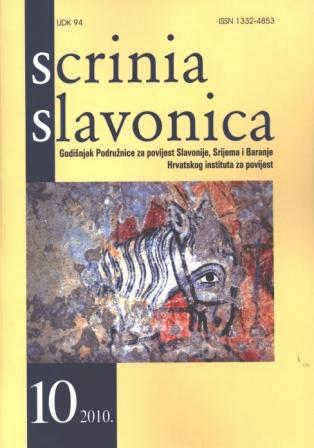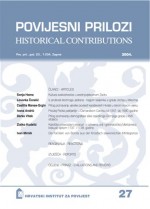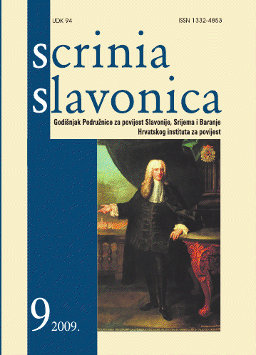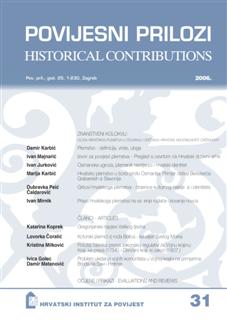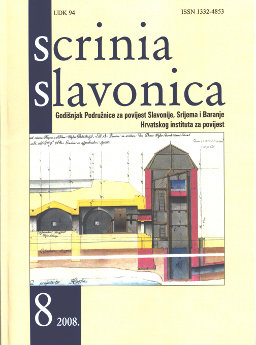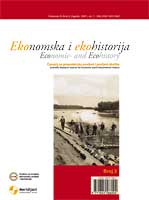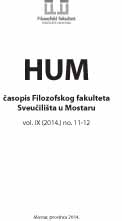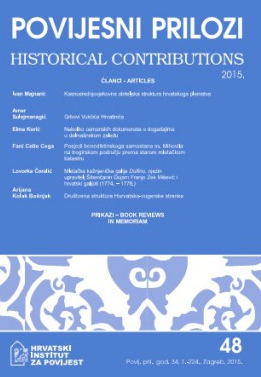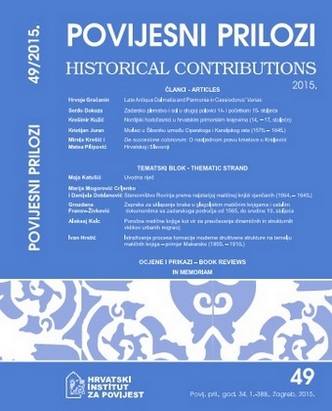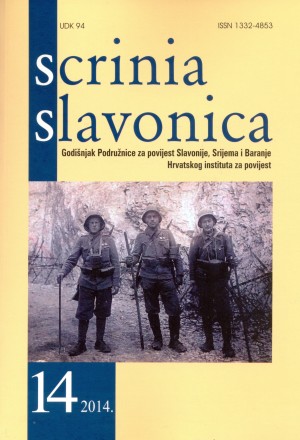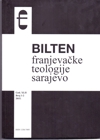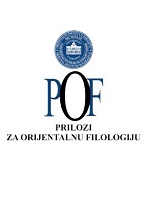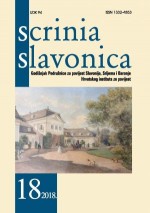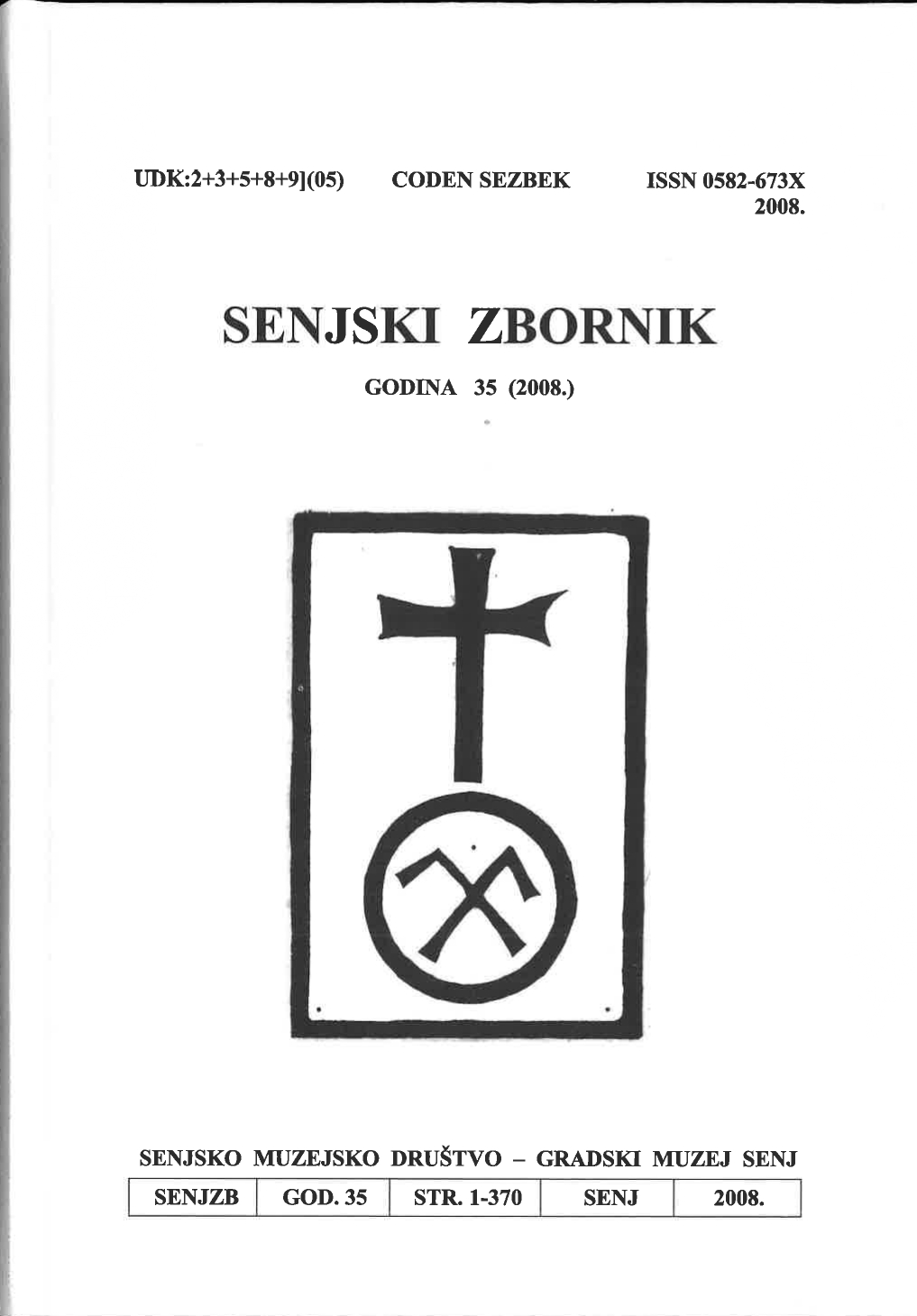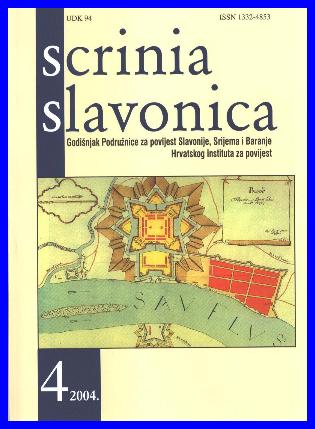
Book reviews
Kritike, prikazi, osvrti
Rudolf Horvat, Povijest grada Virovitice, Virovitica, 2001. (Milan Vrbanus), Ive Mažuran, Valpovo. Sedam stoljeća znakovite prošlosti, Valpovo-Osijek, 2004. (Zdenko Samaržija), Tomislav Ðurić i Dragutin Feletar, Stari gradovi, dvorci i crkve Slavonije, Baranje i zapadnog Srijema, Zagreb, 2002. (Zlata Živaković- -Kerže), Helena Sablić-Tomić i Goran Rem, Slavonski tekst hrvatske književnosti, Zagreb, 2003. (Hrvoje Miletić), Rebeka Jadranka Anić, Više od zadanoga. Žene u Crkvi u Hrvatskoj u 20. stoljeću, Split, 2003.(Zlata Živaković-Kerže), Zbornik uz 70. godišnjicu života Mire Kolar Dimitrijević, ur. Damir Agičić, Zagreb, 2003. (Zlata Živaković-Kerže), Zbornik uz 70. obljetnicu života Dragutina Pavličevića, ur. Ivan Čizmić,Zagreb, 2003. (Mario Kevo), Branka Migotti, Pozlaćena stakla sa Štrbinaca kod Ðakova, Ðakovo, 2003. (Borislav Bijelić), Litterae missionariorum de Hungaria et Transilvania (1572-1717), sv. I i II, ed. István György Tóth, Roma – Budapest, 2002. (Robert Skenderović), Ivan Jelić i Josip Ščrbašić, “Sloga” – Prvi hrvatski parobrod, Slavonski Brod, 2003. (Mario Kevo), Petar Krestić, Srpsko privredno društvo “Privrednik” (1897-1918), Beograd, 2002. (Mato Artuković), Franjo Husinec, Dr. Fran Gundrum Oriovčanin: gradski fizik u Križevcima, Križevci, 2001. (Vijoleta Herman Kaurić), Borislav Bijelić, Ðakovo u prijedlozima i projektima željezničkih pruga do 1914. godine, Ðakovo, 2004. (Zlata Živaković-Kerže), Mira Pelikan i Miroslav Gazda, Spomenar hrvatskim žrtvama stradalim od 1941-1945. i 1991-1995. godine, Osijek, 2003. (Ivan Jelić), Donja Motičina u Drugom svjetskom ratu i posljedice, Donja Motičina 2003. (Ivan Jelić) Theresia Moho, Zato što noć nema oči, Zagreb, 2001. (Martina Grahek), Davor Marijan, Smrt oklopne brigade. Prilozi za istraživanje rata za Hrvatsku i Bosnu i Hercegovinu 1990.-1992, Zagreb-Sarajevo, 2002. (Ivica Miškulin), Ivanka Cafuta, Slavonski Brod 1990-1992. Hrvatski demokratski pokreti Domovinski rat – kronologija, Slavonski Brod, 2003. (IvicaMiškulin), Biblioteka “Brodski pisci”, 1. i 2. kolo, Slavonski Brod, 2002. i 2003. (Ivan Jelić), Mirjana Jakčin Ivančić (ur.), Daruvar u slici i riječi, Daruvar, 2002.(Vijoleta Herman Kaurić), Hrvoje Petrić, Općina i župa Drnje. Povijesno-geografska monografija, Koprivnica, 2000. (Zlata Živaković-Kerže), Podravina. Časopis za multidisciplinarna istraživanja, broj 3 i 4, Koprivnica, 2003. (Dragan Damjanović), Zbornik Muzeja Ðakovštine, sv. 6, Ðakovo, 2003. (Hrvoje Miletić).
More...
